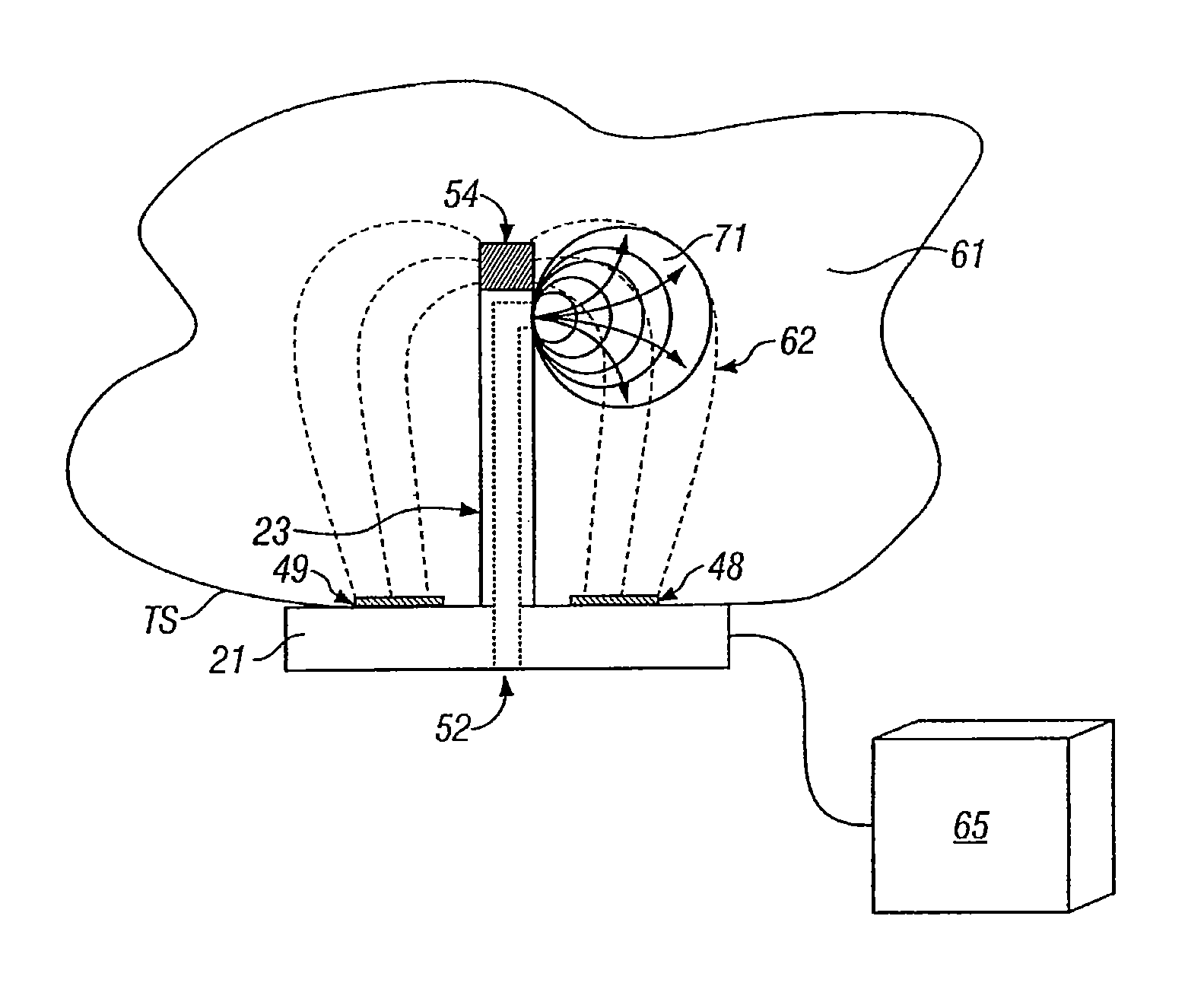Electroporation microneedle and methods for its use
a micro-needle and electro-enhanced technology, applied in the field of electro-enhanced delivery and intracellular delivery, can solve the problems that electro-enhanced delivery might have a very difficult time entering the cells, and achieve the effect of enhancing electro-enhanced delivery and enhancing intracellular delivery
- Summary
- Abstract
- Description
- Claims
- Application Information
AI Technical Summary
Benefits of technology
Problems solved by technology
Method used
Image
Examples
Embodiment Construction
[0032]A first exemplary electroporation apparatus constructed in accordance with the principles of the present invention is illustrated in FIGS. 1 and 1A. The apparatus comprises a shaft 10 having a distal end 10a and proximal end 10b attached to a base 16 at its proximal end. The apparatus of FIGS. 1 and 1A may be formed by vapor deposition of a material into a mold or by chemical etching of a material. Suitable materials include metals, polymers, and semi-conductors Specific methods for fabricating apparatus as illustrated in FIGS. 1 and 1A are described in copending application Ser. No. 09 / 877,653, the full disclosure of which has previously been incorporated by reference.
[0033]The shaft 10 has a substance-delivery lumen 10c which terminates in an opening 10d in the wall of the shaft. The lumen 10c is connected to a luer or other conventional fitting 17 which permits connection of the lumen 10c to a conventional pressurized-delivery device, such as a syringe, pump, or the like. T...
PUM
 Login to View More
Login to View More Abstract
Description
Claims
Application Information
 Login to View More
Login to View More - R&D
- Intellectual Property
- Life Sciences
- Materials
- Tech Scout
- Unparalleled Data Quality
- Higher Quality Content
- 60% Fewer Hallucinations
Browse by: Latest US Patents, China's latest patents, Technical Efficacy Thesaurus, Application Domain, Technology Topic, Popular Technical Reports.
© 2025 PatSnap. All rights reserved.Legal|Privacy policy|Modern Slavery Act Transparency Statement|Sitemap|About US| Contact US: help@patsnap.com



